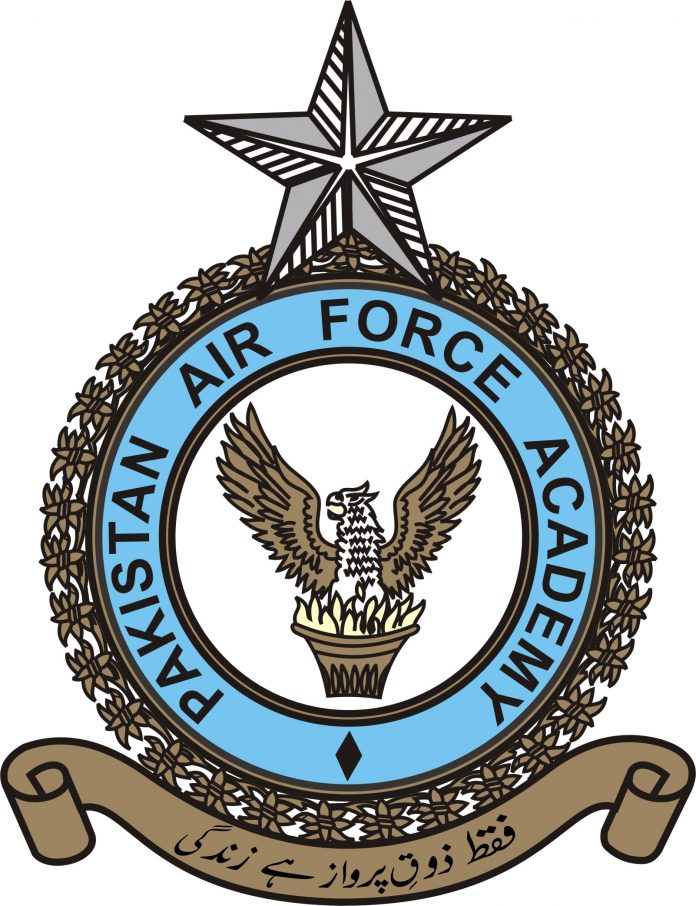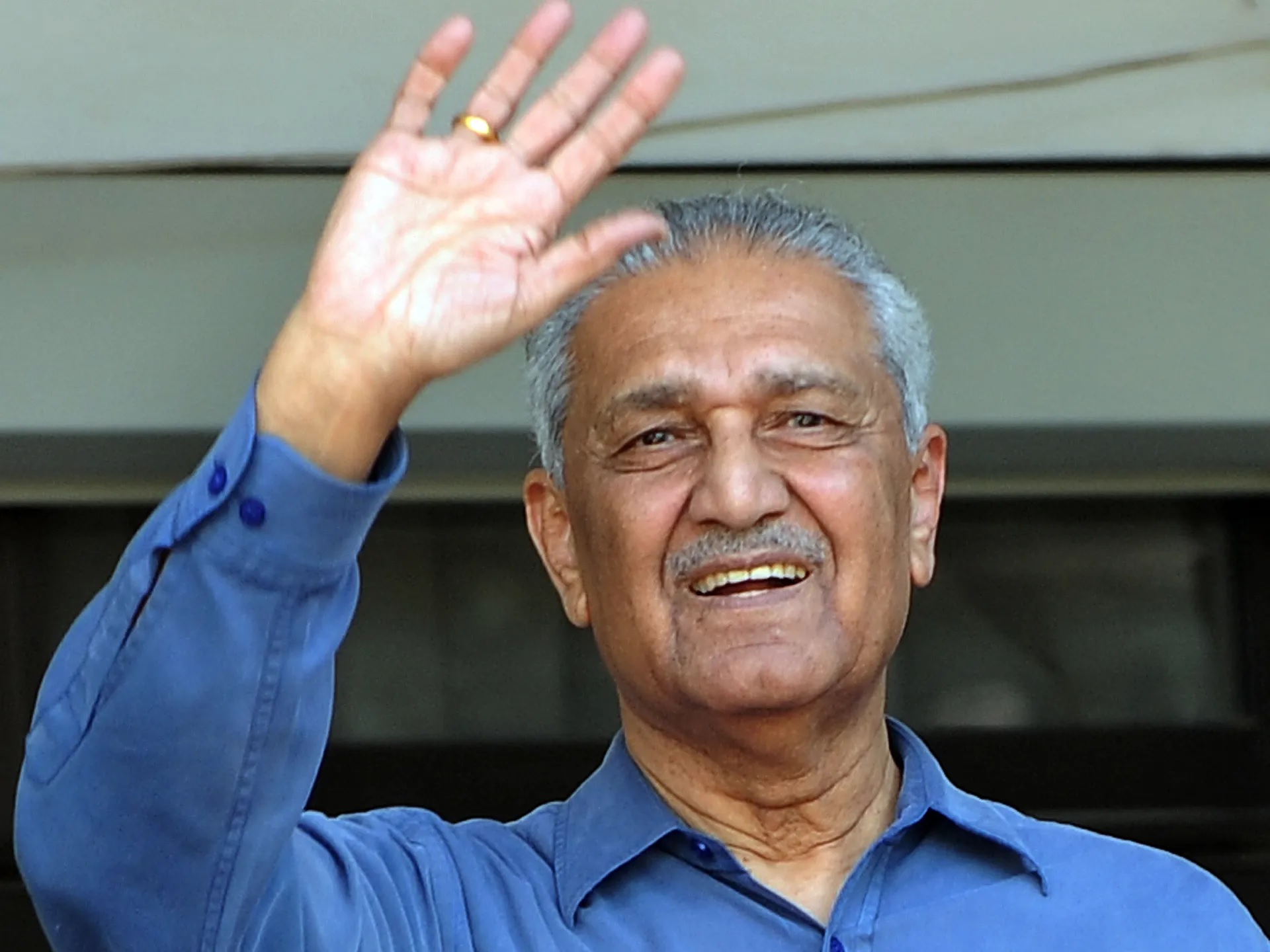Pakistan
PAF pays Tribute to Martyrs, Ghazis of the 1971 war
Published
4 years agoon
By
Editor
(APP): Pakistan Air Force (PAF) on Tuesday in a series of its tributes paid homage to the martyrs and ghazis (soldiers returned with honour from the war) of the 1971 War highlighting their chivalrous war heroics.
The PAF’s Directorate of Public Relations released a short documentary film based on 1971 war deeds.
The documentary underscored the unforgettable role of PAF veterans and soldiers in the 1971 Indo-Pak war who narrated timeless tales of courage and bravery against the enemy.
The documentary also shed light on the renewed pledge that there was no greater goal for Pakistan’s armed forces than sacrificing one’s life for the defence of the motherland and that the sacrifices of its martyrs would never be in vain.
“These great and everlasting sacrifices of our forefathers will always be remembered in the bold letters of history,” it stated.
The documentary narrated that there were 14 Flying squadrons of PAF who participated in the 1971 War. The No.2 Squadron equipped with light flying T-33 Trainer aircraft was led by Wing Commander Ali Asghar Randhawa.
The aircraft keeping in view the War was prepared for ground attacks, where under his leadership the squadron successfully carried out 43 ground attack missions.
Moreover, the No. 5 Squadron was deputed at Sargodha led by Wing Commander Hakimullah and conducted 390 successful combat missions.
The most successful mission was Mukhrian Railway Yard destruction which he himself led whereas his squadron destroyed three enemy aircraft during the war. He was awarded Sitara-i-Jurrat at the end of the War.
The No. 6 Squadron equipped with C-130 aircraft was deputed at Chaklala Airbase led by Wing Commander Nisar Younus that conducted 11 successful bombing missions and broke the backbone of the enemy’s ground force. The squadron’s three valiant fighter pilots were awarded Sitara-i-Jurrat.
The No. 7 Squadron equipped with B-57 Bombers was led by Wing Commander Muhammad Younus that from Minawali attacked enemy strongholds. It conducted 130 bombing missions successfully targeting enemy air bases, radar stations, and other positions of the enemy.
As many as Six Squadron members were awarded Sitara-i-Jurrat.
The No. 9 squadron equipped with F-104 aircraft deputed at Sargodha was led by Wing Commander Arif Iqbal. However, one of its units was serving at Masroor Air Base and during the war it shot down two enemy aircraft.
The Wing Commander Mervyn Middlecoat of the same Squadron achieved martyrdom during a successful attack at Indian airbase and was awarded Sitara-i-Jurrat with Bar.
The No. 11 squadron equipped with F-6 fighter jets was led by Wing Commander Sikander Mahmood Khan and was deputed at Sargodha Airbase.
The squadron shot down one enemy plane while ensuring the protection of the country’s air territories and made Sargodha’s defence invincible.
The No. 14 Squadron equipped with F-86 fighter jets was led by Wing Commander Afzal Chaudhary. This squadron was deputed at Pakistan’s Eastern border the only squadron that was fighting against 12 enemy squadrons and remained steadfast till the last day of the War. It killed shot down enemy aircraft whereas two of its pilots got martyred.
The squadron’s five pilots were awarded Sitar-i-Jurrat for expressing extreme valour and courage.
The No. 15 Squadron equipped with F-86 jets was led by Wing Commander Nazir Jillani at Mureed Airbase was ready to sacrifice itself against the enemy.
During the War, it presented commendable services at Kashmir and Shergarh War and shot down one enemy jet.
The No. 17 Squadron equipped with F-86 fighter planes led by Wing Commander Syed Mujtaba Qureshi was deputed at Rafiqi Airbase, where it successfully provided air support to Army and their brave heart fighter pilot was given Tamgha-i-Jurrat for his exemplary services.
The No. 18 Squadron led by Wing Commander Ali Imran Bokhari was deputed at Sargodha Airbase. The Wing Commander led 19 combat missions which was a record by any pilot to lead the such number of missions. It successfully destroyed many enemy basis and shot down supersonic Su-7 aircraft of Inidan Air Force whereas another pilot of the squadron destroyed enemy’s two MiG-21 aircraft.
The squadron’s two pilots got Tamgha-i-Jurrat.
The No. 19 Squadron equipped with F-86 jets was led by Wing Commander Saleem Sheikh was deputed at Masroor Airbase and rendered commendable services at Chor Sector during the War.
In its befitting response to enemy attacks, it destroyed many tanks and a train fully loaded with fuel and weapons. During the war, its brave pilot got martyred and was awarded Tamgha-i-Jurrat.
The No. 23 Squadron of F-6 jets, led by Wing Commander Manzoor ul Hassan Hashmi was deputed at Risalwala, and during the war, it shot down two enemy aircraft. One of its valiant martyrs was awarded Sitara-i-Bisalat and another pilot was awarded Tamgha-i-Jurrat for shooting down enemy aircraft.
The No.25 Squadron of F-6 jets, led by Wing Commander Saad Akhtar Hatmi was deputed at Mianwali and Sargodha and got the honour to shoot three enemy aircraft during safeguard of the motherland and two of its pilots were given Sitar-i-Jurrat.
The No.26 Squadron equipped with F-86 jets led by Wing Commander Sharbat Ali Chenghezi deputed at Peshawar Base who himself led many air attacks as Squadron Commander at Kashmir and Chamb sector.
It destroyed five enemy jets and two of its pilots embraced martyrdom while exhibiting extraordinary performance and were given Sitara-i-Jurrat posthumously.
In 1971, where air fighters were proving their mettle at all levels on the same the officers, experts, and technicians the Radar Squadron developed for Air Defence proved that they were part of the best air force of the world.
Under the leadership of Group Captain, Ayaz Ahmed and Group Captain Rehmat Khan radar systems deployed at the PAF bases in Badin and Sakesar delivered extraordinary performances during the War. Moreover, various units of Air Defence during the war played a key role. Expert officers like Squadron Leader Rabnawaz and Squadron Leader Farooq Haider Khan through their best skills helped in destroying many aircraft of the enemy.
Moreover, Squadron Leader Javed Butt and renowned Air Defence Controllers like Fateh Sher, Jalil Akhtar Kermani, Samiullah, Abdul Mueez, and Noor Ul Islam wholeheartedly participated in the War to ensure the country’s defence.
It concluded that the nation paid salute to these valiant sons of the soil.
You may like
Pakistan
Unity, Faith, and Discipline: The Cornerstones of Pakistan’s Motto as “Aik Qaum” (One Nation)
Published
3 weeks agoon
May 28, 2025By
EDITOR
The guiding motto of Pakistan, “Unity, Faith, and Discipline,” holds profound significance in shaping the national identity of Pakistanis as “Aik Qaum” (One Nation). These three words, coined by the country’s founding father, Quaid-e-Azam Muhammad Ali Jinnah, form the bedrock of the national ethos. They represent the essential pillars upon which Pakistan was built and must continue to stand in pursuit of progress, solidarity, and global stature.
This motto is not just a political slogan or a patriotic catchphrase; it is an enduring call for the people of Pakistan to unite under a common banner of national purpose, to have faith in their capabilities, and to uphold the discipline needed for personal and national success. In this detailed article, we will explore the deeper meanings and implications of unity, faith, and discipline, and how these principles guide the vision of Pakistan as a united and resilient nation.
Unity: The Power of Togetherness
Unity is the first and foremost element of Pakistan’s national motto. It emphasizes the importance of national cohesion and solidarity across the diverse ethnic, linguistic, and religious landscape of Pakistan. As a nation that emerged from the crucible of colonialism and division, Pakistan’s unity has always been central to its survival and growth.
At its core, unity signifies a collective commitment to the country’s well-being, transcending personal or communal differences. Pakistan is home to a wide variety of cultures, languages, and sects, from the Punjabis, Sindhis, Pashtuns, and Baloch to religious minorities such as Christians, Hindus, and Sikhs. The concept of unity calls for embracing this diversity as a source of strength, rather than as a source of division.
Historically, the drive for unity was integral to the Pakistan Movement, which brought together Muslims from different regions of British India to fight for a common homeland. Quaid-e-Azam Muhammad Ali Jinnah recognized that only through unity could the Muslims of the subcontinent secure their political, economic, and social rights. His vision for Pakistan was one where all citizens, regardless of their background, would work together for the common good.
In modern-day Pakistan, unity remains vital for addressing the challenges of sectarianism, regionalism, and external threats. A united Pakistan is better equipped to deal with issues such as poverty, terrorism, and political instability. The concept of unity fosters a sense of belonging and national pride, urging Pakistanis to think of themselves as one people, with one purpose, under one flag.
Faith: Belief in a Higher Cause and in Ourselves
Faith is the second pillar of Pakistan’s motto and is deeply rooted in the spiritual and ideological foundation of the country. Pakistan was established as a homeland for Muslims, and faith in Islam has always been central to its identity. However, faith as a motto goes beyond mere religious belief; it encompasses a broader sense of confidence, trust, and belief in a higher cause, in the potential of the nation, and in the resilience of its people.
For Pakistan, faith is twofold: it represents both religious faith and faith in the nation’s future. Pakistanis draw strength from their spiritual beliefs, finding unity and purpose in the teachings of Islam, which emphasize justice, equality, and community welfare. This religious faith provides a moral compass for both governance and daily life, promoting values such as honesty, compassion, and responsibility.
Faith also refers to belief in Pakistan’s potential. Pakistan has faced numerous challenges since its inception in 1947, from wars and natural disasters to political turmoil and economic crises. Through it all, the faith of its people in the country’s resilience and eventual success has been unwavering. This faith in Pakistan’s ability to rise above adversity and build a better future remains a key motivator for both the government and the citizenry.
Jinnah, in his speeches, often urged Pakistanis to have faith in themselves, in their institutions, and in their destiny. He believed that faith in the country’s foundational principles would ensure its survival and prosperity. In today’s rapidly changing world, this faith is crucial in fostering optimism, innovation, and national pride among Pakistanis.
Discipline: The Key to Progress and Stability
The third and final element of Pakistan’s national motto is discipline, a principle that Jinnah regarded as essential for the development of a strong, stable, and successful nation. Discipline is the cornerstone of order, efficiency, and progress. It demands that citizens and leaders alike act with responsibility, accountability, and foresight.
For Pakistan to achieve its full potential, discipline is required at both the individual and institutional levels. On a personal level, discipline involves hard work, ethical behavior, and adherence to the rule of law. It requires Pakistanis to be diligent in their pursuits, whether in education, work, or civic duties, and to prioritize the common good over personal gain.
On a broader scale, national discipline means the effective functioning of the state, including the proper management of resources, the upholding of justice, and the fair enforcement of laws. A disciplined nation adheres to democratic values, maintains the integrity of its institutions, and operates with transparency and accountability. Discipline ensures that the country can handle crises, avoid corruption, and build a sustainable economy.
Jinnah himself was a model of discipline. His dedication to the cause of Pakistan, his meticulous planning, and his unwavering commitment to the principles of justice and fairness were key factors in the success of the Pakistan Movement. He emphasized that without discipline, a nation could not stand firm, nor could it achieve its desired goals.
Today, Pakistan faces numerous challenges that require discipline in governance, education, healthcare, and defense. The globalized world presents both opportunities and obstacles, and only through disciplined efforts can Pakistan compete on the world stage. Whether in fighting corruption, strengthening institutions, or promoting social cohesion, discipline remains a critical factor in Pakistan’s progress.
The Relevance of “Unity, Faith, and Discipline” in Modern Pakistan
As Pakistan navigates the 21st century, the principles of unity, faith, and discipline are more relevant than ever. These values are not just historical legacies but are guiding principles for Pakistan’s future as a vibrant, resilient, and prosperous nation. In an era of rapid globalization, technological advancement, and shifting political dynamics, these ideals provide a steady framework for national development and collective progress.
- Unity is vital for overcoming internal divisions and presenting a strong, cohesive front on the international stage.
- Faith continues to be a source of strength, providing hope, moral guidance, and belief in the country’s bright future.
- Discipline is crucial for tackling corruption, ensuring effective governance, and building a strong economy capable of competing globally.
In conclusion, “Unity, Faith, and Discipline” remains the heart of the Pakistani identity as “Aik Qaum” (One Nation). It encapsulates the aspirations of a people who, despite facing numerous challenges, remain committed to the vision of a united, just, and prosperous Pakistan. These principles, when embraced and practiced by all Pakistanis, have the power to shape a future that honors the past while paving the way for new achievements on the world stage.
Article
Aik Qaum: The Fusion of Integrity and Patriotism
Published
3 weeks agoon
May 28, 2025By
EDITOR
We keep Integrity closest to our Heart and Patriotism on top of our mind.
Integrity and patriotism are not separate entities; they are intertwined in the soul of Pakistan. The people understand that to be a patriot is to uphold the principles of integrity. Honesty and love for one’s country are two sides of the same coin. Together, these values form the essence of “Aik Qaum.”
The fusion of integrity and patriotism is evident in the everyday lives of Pakistanis. It’s in the farmer toiling the fields, the teacher educating the youth, and the soldier guarding the borders. It’s in the child who dreams of a better Pakistan and the elderly who have seen the nation grow. “Aik Qaum” is the realization that integrity and patriotism are the heart and mind of Pakistan, beating in unison to guide the nation forward.
As we celebrate the spirit of “Aik Qaum,” we honor the values that make Pakistan a unique and resilient nation. Integrity and patriotism serve as our guiding stars, leading us towards a brighter and more prosperous future. In the heart of every Pakistani and at the forefront of their minds, “Aik Qaum” stands as a testament to the strength of a united nation, bound by the principles of integrity and the unyielding love for their homeland.
In Pakistan, “Aik Qaum” is not just a motto; it’s a way of life that embodies the enduring spirit of a proud and united nation.
Pakistan
Dr. Abdul Qadeer Khan: The Real Hero of Pakistan
Published
1 month agoon
May 10, 2025By
EDITOR
Dr. Abdul Qadeer Khan, affectionately known as A.Q. Khan, is widely celebrated as the “Father of Pakistan’s Nuclear Program.” His contributions to science and defense not only elevated Pakistan to a new level of self-reliance but also safeguarded the nation’s sovereignty in a volatile region. For many Pakistanis, Dr. Khan is more than a scientist—he is a national hero whose legacy of patriotism, brilliance, and resilience continues to inspire generations.
Early Life and Education
Dr. Abdul Qadeer Khan was born on April 1, 1936, in Bhopal, India. In the aftermath of the partition in 1947, his family migrated to Pakistan. After completing his early education, Khan pursued higher studies in Europe, earning a degree in metallurgy from the Netherlands and later, a doctorate in metallurgical engineering from Belgium.
His education in Europe allowed him to work with some of the most advanced technology of the time. He gained valuable experience working at a European uranium enrichment facility, where he learned the intricacies of centrifuge technology—a technology that would play a pivotal role in his future efforts to develop Pakistan’s nuclear capabilities.
Contribution to Pakistan’s Nuclear Program
In the early 1970s, following Pakistan’s defeat in the 1971 war and India’s successful nuclear test in 1974, the need for Pakistan to develop its nuclear deterrent became urgent. It was at this crucial juncture that Dr. A.Q. Khan offered his services to the government of Pakistan.
Khan’s return to Pakistan marked the beginning of a transformative era in the country’s defense strategy. He was given charge of the Kahuta Research Laboratories (now called Khan Research Laboratories), where he spearheaded Pakistan’s uranium enrichment efforts. Despite limited resources and immense international pressure, Dr. Khan and his team achieved remarkable success. Under his leadership, Pakistan conducted its first successful nuclear test on May 28, 1998, in response to India’s earlier tests, making it the first Muslim-majority country to possess nuclear weapons.
Safeguarding Pakistan’s Sovereignty
Dr. Khan’s role in the successful development of nuclear technology is widely regarded as a crucial factor in maintaining Pakistan’s security and sovereignty. His work ensured that Pakistan had a credible deterrent against external aggression, particularly in light of the hostile relations with its neighbor, India.
The achievement not only bolstered Pakistan’s standing in the global community but also instilled a sense of pride and security within the nation. For many, Dr. Khan became a symbol of national pride, courage, and determination in the face of adversity.
National Hero and Legacy
Dr. Abdul Qadeer Khan passed away on October 10, 2021, leaving behind a legacy that will forever be etched in the history of Pakistan. His funeral was attended by thousands, including political leaders, military officials, and citizens from all walks of life. He was laid to rest with full state honors, a testament to the nation’s deep respect and gratitude for his services.
Dr. Khan’s work ensured that Pakistan remained secure in an unpredictable geopolitical landscape. His contributions to science and defense transformed the country, empowering it with a nuclear deterrent that still serves as a cornerstone of its defense strategy today.
Dr. Abdul Qadeer Khan will always be remembered as a visionary who dedicated his life to serving Pakistan. His brilliance as a scientist, his unwavering commitment to his country, and his determination to see Pakistan rise as a strong, independent nation make him a true national hero. His legacy is a reminder that through perseverance, knowledge, and love for one’s country, even the most daunting challenges can be overcome. Dr. Abdul Qadeer Khan will forever remain the “Real Hero of Pakistan.”

Unity, Faith, and Discipline: The Cornerstones of Pakistan’s Motto as “Aik Qaum” (One Nation)

Aik Qaum: The Fusion of Integrity and Patriotism








